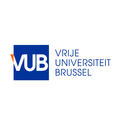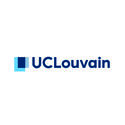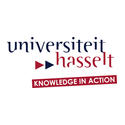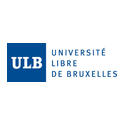In short
This project intends to evaluate the associations between living in/close to a green or a blue area on specific morbidity and mortality in Belgium, at different stages of life (infancy to elderly). It assesses all-cause and cause-specific mortality, specific morbidities and perceived health and takes into account environmental pollutants (fine dust, black carbon, NOx) and socioeconomic factors (unemployment, education status, housing quality, etc.) at different levels of spatial aggregation. Within GRESP-HEALTH, the institute focusses on determining the variables that have direct and indirect effects on the prevalence of general cardiovascular diseases.
Project description
The project includes all individuals registered in the official Belgian censuses of 1991 and/or 2001. Three main levels of observation will be studied: individual, statistical sector and group of statistical sectors having similar characteristics in green/blue areas and air pollution. This allows following individual and ecological designs. Mortality will be based on the National Mortality Database (a linkage between cause-specific mortality and SE factors using the 1991 and 2001 censuses and cause-specific mortality for 2000-2010). Perceived health information is available from the 2001 census. Specific morbidity (2004-2012) will be derived from the IMA-AIM (“Intermutualistisch Agentschap – Agence Inter-Mutualiste”) database, which contains reimbursement data of individual prescriptions. For green/blue spaces, the surface, shape, accessibility and type will be calculated for each statistical sector. Land cover type fractions (% forest, % agriculture, % built, etc.) will be derived from satellite images(CORINE). Residential area-specific exposure to air pollutant data will be obtained from the Belgian Interregional Environment Agency (IRCEL-CELINE) and traffic noise databases are used whenever possible. Housing quality, educational attainment, migration origin and professional status will be indicators of socio-economic status (SES). The analyses will be conducted separately in different age specific populations (infants, children and adults). We will use multilevel models for clustered data within geographical areas (i.e. individuals, households, nested scales, statistical sectors/groups of statistical sectors and municipalities, districts, provinces, regions). When possible, the models will be controlled for SES, perceived environment, air/noise pollution, and type of area (urban, sub-urban, rural, etc). Interactions of green/blue spaces with air pollution and SE factors will be evaluated and stratified analyses in areas with similar SE and environmental characteristics will be performed. Moreover, more specific population groups (elderly, gender, employment status) will be considered.
Read more about the GRESP-HEALTH project
So far, the effects of the natural environment on health/mortality have not been investigated in Belgium and none of the previous studies integrated geographical, sociological and the environmental approaches in their research. One of the main strengths in the GRESP-HEALTH project is the integration of different disciplines. Our project does not only integrate sociological and environmental approaches but also public health and geographical approaches. This multidisciplinarity will be reflected in the quality of the methodology used, as well as in the research outcomes.
In addition, the comprehensive exercise proposed in this project cannot be easily replicated in most other European countries. Individually linked data containing cause-specific mortality as well as morbidity and socio-economic and demographic characteristics on a nationwide scale are quite unique. To our knowledge, only the Nordic countries have access to equally comprehensive data.
There is solid evidence that health can be influenced by policies, not only policies of the health sector, but also by measures in other policy sectors. The conclusions of our research project will provide a sound basis for policy measures in the domains of urban and agricultural planning, and health promotion. Policy measures and preventive actions for identified vulnerable categories will be proposed and can be very useful at the federal, regional, local and even neighbourhood level.
At the societal level, the distance to green/blue areas, their accessibility, the characteristics of these areas, and the social environment have an impact in the use that society makes of green areas. Different choices in use of space influence the directions and magnitudes of the effects in health and mortality. Therefore, understanding the link between green/blue spaces and health/mortality, controlling for the impact of socioeconomic factors and environmental pollutants, is highly relevant. The translation of the research to general population through the media or informative materials on websites, and by approaching civil society and socio-cultural organizations will promote actions to improve health and life quality in relation to the use of green/blue spaces in their neighbourhood based on the results of our research.
Added value for public health
Improvement of the type of information that can be given to hay fever sufferers to reduce their hay fever symptoms or prevent them.
Added value at scientific level
- Development and evaluation of a mobile health application
- Improved understanding of the complex relationship between biodiversity and human health
- Strengthening the position of the institute in the One Health/EcoHealth community
Sciensano's project investigator(s):
Service(s) working on this project
Partners








